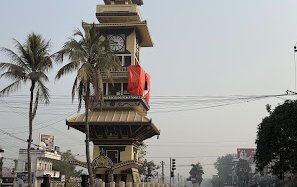
At the recent Nepal Infrastructure Summit 2014, India’s Minister Nitin J Gadkari urged Nepal to adopt PPP model soon. This model it is hoped will provide investment potential and promote infrastructure to projects in areas of highways, railways and tourism. Money would be no problem once this was done he said.
Many, many years ago, during King Mahendra’s reign we Nepalis heard the slogan ‘Education for All’. This statement, like the ‘Health for All 2000’ which never became a reality has also not been fulfilled.
In 1972 the HMG of Nepal took over all the private sector educational institutions in what may be termed a form of ‘Nationalisation’ to introduce and establish the New Education System Plan (NESP). The expansion of the educational system during these last 45 years has been has had its ups and downs. First was the affiliation of private campuses, discontinuation of the two year ‘Diplomas’ and lastly the de-linking of 11 and 12th years courses from the university.
With the input of many players and also finance, it is claimed that that the literacy rate of both males and females have been raised appreciably. Some districts in the country have also been termed ‘Literate’. What must be questioned is whether this is the result of PPM which stands for Public Private Mix? Has this exercise now come full circle and the Nation benefitted in the process? If this is one side of the coin, the flip side lists the shortcomings as:
- Annual inability to supply textbooks on time to a large % of the school children. Listing of unnecessary books for the sake of kickbacks from the suppliers.
- Existence of bogus schools / community colleges i.e. ‘jhola institutions’ and the involvement of District Educational offices in such scam.
- Bogus and incompetent teachers who attend the government institutions occasionally to sign in and collect the months’ pay. It may be recalled that in Panchayat days school teachers had to have a ‘Bachelors or Masters’ in education to teach.
- Same teachers teaching at multiple places to different grades e.g. Class VII, SLC or in Higher Secondary is not understandable.
- The distribution of examination answers papers for correction by the concerned person to students taking coaching classes from him or her
- A lot of external funds are said to have been spent for education training of school teachers over the last two decades. It is surprising that those teachers in private institutions who do not get such facilities and perhaps even get lesser pay for more work, have much higher pass results than those in government institutions. Has the availability of external aid been abused and is it akin to pouring water on sand?
The situation now is that the higher dignitaries of three universities namely Pokhara, Purbanchal and Mid-Western who had been under the magnifying glass or scanner of the Commission for the Investigation of Abuse of Authority (CIAA) were arrested. ( Recently some have been set free on bail). Staff of Tribhuvan University is being currently investigated. In such a situation is there room for hope for education in this country?
Such is the state of affairs of education in this country where it is claimed that the country has made great strides as a result of PPM. It is in this context too that we are in the process of providing free health care and some medicines at the district level. Plans are afoot to open clinics in urban centres. The reality in the health sector is that:
- Officials at the Ministry of Health & Population are under investigation by the CIAA as are also those at the Child Health Division
- Most institutions in rural areas are run by peons who are local rather than the health personnel who have been posted there but go there only to sign and collect the monthly pay.
- Most of the medicines purchased for use are substandard and usually have very short expiry dates and generally are expired when it gets to its destination.
- Posts for personnel to man the health institutions of the country had been created for a population of about 10 million. Now it is nearly 30 million and so new posts have to be created.
- It is a shame that the Trauma Centre in the Bir Hospital Compound has not started functioning after so many years of completion. Who is responsible?
- Lastly, the Nepal Medical Council responsible for the standard of health meted out to the Nepali population and also for the standard of academic training of doctors and dentists is like a ‘lame duck’ and has not been functioning for a couple of years. The CIAA is also keeping a watch on it.
In the Health Sector too, encouragement is being given to the private sector and there is talk of having PPM. A large number of private institutions have come up and the MoH&P is supposed to have standards for functioning. There are new institutions such as Medical Colleges but the authorities do not have proper guidelines for institutions above hundred beds. What is more important is that the guidelines laid down should be applicable not only to the private sector but to the government institutions also. What the public is concerned about is that the service provided by the private sector should be worth what is being charged for.

Hemang Dixit
The author writes fiction under the name of Mani Dixit. Website: www.hdixit.org.np. Twitter: @manidixithd
- Top Heavy
- Sep 20, 2023
- Most Able?
- Sep 04, 2023
- Changing Times
- Aug 21, 2023
- Nepali Shenanigans
- Aug 03, 2023
- Budget Naataks
- Jun 29, 2023















